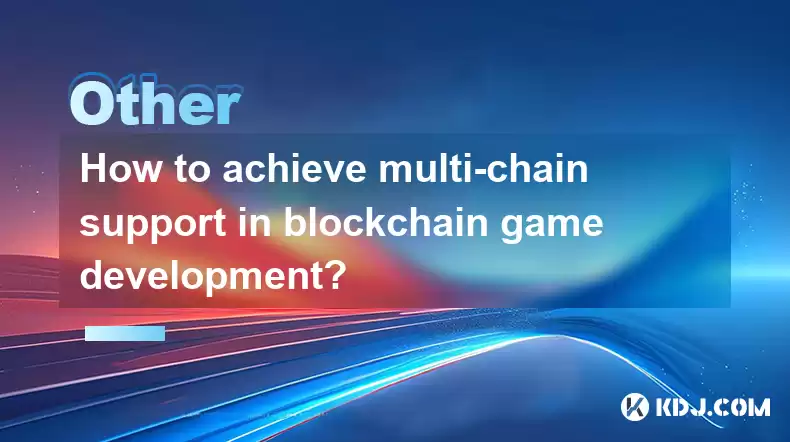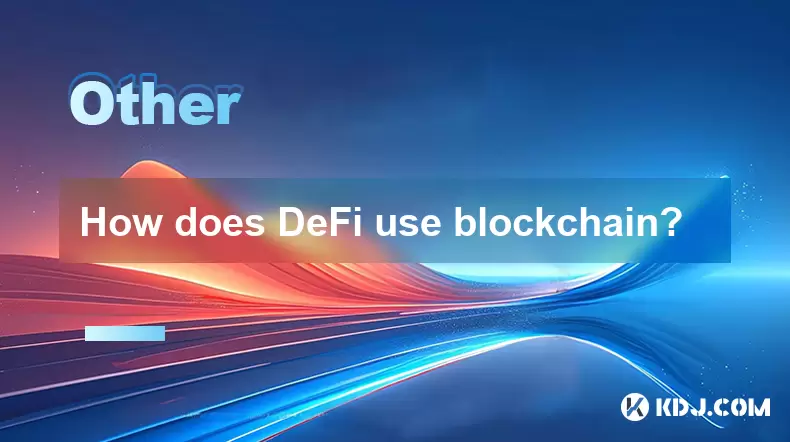-
 Bitcoin
Bitcoin $114000
0.76% -
 Ethereum
Ethereum $3488
0.53% -
 XRP
XRP $2.908
2.27% -
 Tether USDt
Tether USDt $1.000
0.05% -
 BNB
BNB $750.3
0.39% -
 Solana
Solana $161.9
0.14% -
 USDC
USDC $1.000
0.03% -
 TRON
TRON $0.3258
1.22% -
 Dogecoin
Dogecoin $0.1991
1.38% -
 Cardano
Cardano $0.7260
3.39% -
 Hyperliquid
Hyperliquid $38.20
2.33% -
 Stellar
Stellar $0.3987
7.33% -
 Sui
Sui $3.414
1.17% -
 Chainlink
Chainlink $16.28
2.52% -
 Bitcoin Cash
Bitcoin Cash $542.2
2.07% -
 Hedera
Hedera $0.2489
7.51% -
 Ethena USDe
Ethena USDe $1.001
0.05% -
 Avalanche
Avalanche $21.40
0.70% -
 Toncoin
Toncoin $3.635
0.75% -
 Litecoin
Litecoin $109.8
2.04% -
 UNUS SED LEO
UNUS SED LEO $8.955
-0.02% -
 Shiba Inu
Shiba Inu $0.00001221
2.44% -
 Uniswap
Uniswap $9.152
2.20% -
 Polkadot
Polkadot $3.588
2.09% -
 Monero
Monero $298.1
1.27% -
 Dai
Dai $1.000
0.01% -
 Bitget Token
Bitget Token $4.326
1.28% -
 Pepe
Pepe $0.00001045
1.96% -
 Cronos
Cronos $0.1330
4.27% -
 Aave
Aave $257.9
2.12%
How to achieve multi-chain support in blockchain game development?
Multi-chain support in blockchain games enhances scalability and reach by leveraging different blockchains' strengths, requiring careful planning and implementation.
Apr 15, 2025 at 07:00 am

Achieving multi-chain support in blockchain game development is a complex yet rewarding endeavor that allows developers to tap into the strengths of various blockchain networks. This approach not only enhances the game's scalability and interoperability but also broadens its reach to a diverse user base across different blockchain ecosystems. In this article, we will explore the steps and considerations necessary to implement multi-chain support effectively in your blockchain game.
Understanding Multi-Chain Support
Multi-chain support refers to the ability of a blockchain game to operate across multiple blockchain networks simultaneously. This means that the game can leverage the unique features of different blockchains, such as Ethereum's smart contract capabilities, Binance Smart Chain's low transaction fees, or Polygon's high throughput. By integrating multiple chains, developers can optimize the game's performance, reduce costs, and provide a seamless experience for players regardless of their preferred blockchain.
Choosing the Right Blockchains
Selecting the appropriate blockchains for your game is crucial. Consider the following factors when making your choice:
- Scalability: Some blockchains, like Polygon, are designed to handle high transaction volumes, making them ideal for games with many users.
- Cost: Transaction fees vary significantly across blockchains. For instance, Binance Smart Chain typically offers lower fees than Ethereum.
- Smart Contract Capabilities: If your game relies heavily on smart contracts, you'll want to choose blockchains with robust smart contract platforms, such as Ethereum or Solana.
- Community and Ecosystem: The size and activity of a blockchain's community can impact the game's adoption and success. Ethereum, for example, has a large and active developer community.
Designing a Multi-Chain Architecture
To implement multi-chain support, you need to design an architecture that can seamlessly interact with multiple blockchains. Here are the key components of such an architecture:
- Cross-Chain Bridges: These are protocols that enable the transfer of assets and data between different blockchains. Examples include Chainlink and Polkadot.
- Interoperability Protocols: These protocols facilitate communication between blockchains. Cosmos and Thorchain are popular choices.
- Game Backend: Your game's backend should be capable of handling transactions and data from multiple blockchains. This might involve using a middleware layer that abstracts the complexities of different blockchain interactions.
Implementing Cross-Chain Functionality
Implementing cross-chain functionality involves several steps:
- Set Up Blockchain Nodes: You'll need to set up nodes for each blockchain you plan to support. This can be done using services like Infura for Ethereum or QuickNode for other chains.
- Integrate Cross-Chain Bridges: Choose and integrate a cross-chain bridge that suits your needs. For example, if you're using Ethereum and Binance Smart Chain, you might use the Anyswap bridge.
- Develop Smart Contracts: Write smart contracts for each blockchain that will handle game logic and asset management. Ensure these contracts are compatible with the respective blockchain's standards (e.g., ERC-20 for Ethereum).
- Implement Middleware: Develop or use existing middleware to manage interactions between different blockchains. This middleware should handle tasks like asset transfers and data synchronization.
Testing and Deployment
Before deploying your multi-chain game, thorough testing is essential to ensure everything works as expected. Here's how to approach testing:
- Unit Testing: Test individual components of your game, such as smart contracts and cross-chain bridges, in isolation.
- Integration Testing: Test how different components interact with each other across multiple blockchains.
- User Acceptance Testing (UAT): Have a group of users test the game in a controlled environment to identify any issues with the user experience.
Once testing is complete, deploy your game on the chosen blockchains. This might involve:
- Deploying Smart Contracts: Use tools like Truffle or Hardhat to deploy your smart contracts on each blockchain.
- Setting Up Game Servers: Ensure your game servers are configured to handle requests from multiple blockchains.
- Monitoring and Maintenance: After deployment, continuously monitor the game's performance and make necessary adjustments to ensure smooth operation across all supported blockchains.
Handling Asset Management
Managing assets across multiple blockchains can be challenging. Here are some strategies to consider:
- Token Wrapping: Use token wrapping to convert assets from one blockchain to another. For example, you can wrap Ethereum tokens to use them on Binance Smart Chain.
- Unified Asset Representation: Implement a system where assets are represented uniformly across all blockchains, making it easier for players to understand and manage their holdings.
- Asset Synchronization: Ensure that asset balances are synchronized across all blockchains to prevent discrepancies and ensure a consistent player experience.
Ensuring Security and Compliance
Security is paramount when dealing with multiple blockchains. Here are some best practices to follow:
- Smart Contract Audits: Have your smart contracts audited by reputable firms to identify and fix vulnerabilities.
- Secure Cross-Chain Transactions: Use secure cross-chain bridges and protocols to minimize the risk of asset loss during transfers.
- Compliance with Regulations: Ensure that your game complies with the regulatory requirements of each blockchain's jurisdiction. This might involve implementing KYC/AML procedures.
User Experience Considerations
A seamless user experience is crucial for the success of a multi-chain game. Consider the following:
- Simplified Onboarding: Make it easy for players to connect their wallets from different blockchains. Use tools like Web3.js or ethers.js to facilitate wallet integration.
- Clear Instructions: Provide clear instructions on how to use the game across different blockchains. This might include tutorials or FAQs.
- Consistent Interface: Ensure that the game's interface remains consistent across all supported blockchains to avoid confusing players.
FAQs
Q: Can I add multi-chain support to an existing blockchain game?
A: Yes, it is possible to add multi-chain support to an existing game. However, it requires careful planning and implementation to ensure that the existing game logic and assets are compatible with the new blockchains. You'll need to update your smart contracts, integrate cross-chain bridges, and possibly redesign parts of your game's architecture.
Q: How do I handle different gas fees across blockchains?
A: Managing different gas fees can be challenging. One approach is to use a gas station network like Gas Station Network (GSN) to abstract gas fees from users. Another method is to subsidize gas fees for users on blockchains with higher costs, ensuring a consistent experience across all supported chains.
Q: What are the potential risks of multi-chain support?
A: The main risks include increased complexity in development and maintenance, potential security vulnerabilities in cross-chain bridges, and the possibility of regulatory issues across different jurisdictions. It's essential to conduct thorough risk assessments and implement robust security measures to mitigate these risks.
Q: How can I ensure that my game remains performant across multiple blockchains?
A: To ensure performance, optimize your smart contracts for each blockchain, use efficient cross-chain bridges, and implement load balancing and caching mechanisms in your game's backend. Regular monitoring and performance tuning are also crucial to maintaining a smooth gaming experience across all supported blockchains.
Disclaimer:info@kdj.com
The information provided is not trading advice. kdj.com does not assume any responsibility for any investments made based on the information provided in this article. Cryptocurrencies are highly volatile and it is highly recommended that you invest with caution after thorough research!
If you believe that the content used on this website infringes your copyright, please contact us immediately (info@kdj.com) and we will delete it promptly.
- XRP: Crypto Analyst's Smartest Buy in 2025?
- 2025-08-04 00:30:13
- SEC, Crypto Regulation, and Digital Assets: A New Era?
- 2025-08-04 00:30:13
- Navigating the Meme Coin Mania: Cold Wallets, SHIB, and DOGE in 2025
- 2025-08-03 22:30:16
- Bitcoin's Price Fall and Scrutiny: What's a New Yorker to Think?
- 2025-08-03 22:30:16
- Shiba Inu's Resistance and Recovery Push: What's Next for SHIB?
- 2025-08-03 22:50:16
- Bitcoin, Hashcash, and Crypto Innovation: A Look at the Foundation and Future
- 2025-08-03 23:12:53
Related knowledge

What is the difference between on-chain and off-chain transactions?
Aug 02,2025 at 04:22pm
Understanding On-Chain TransactionsOn-chain transactions refer to digital asset transfers that are recorded directly on a blockchain ledger. These tra...

What is a node's role in a blockchain network?
Aug 03,2025 at 03:16pm
Understanding the Function of a Node in a Blockchain NetworkA node is a fundamental component of any blockchain network, acting as a participant that ...

How are transactions verified on a blockchain?
Aug 04,2025 at 12:35am
Understanding the Role of Nodes in Transaction VerificationIn a blockchain network, nodes are fundamental components responsible for maintaining the i...

What is the double-spending problem and how does blockchain prevent it?
Aug 02,2025 at 01:07pm
Understanding the Double-Spending ProblemThe double-spending problem is a fundamental challenge in digital currency systems where the same digital tok...

What is the difference between a blockchain and a database?
Aug 01,2025 at 09:36pm
Understanding the Core Structure of a BlockchainA blockchain is a decentralized digital ledger that records data in a series of immutable blocks linke...

How does DeFi use blockchain?
Aug 03,2025 at 11:15pm
Understanding the Role of Blockchain in DeFiDecentralized Finance (DeFi) relies fundamentally on blockchain technology to operate without intermediari...

What is the difference between on-chain and off-chain transactions?
Aug 02,2025 at 04:22pm
Understanding On-Chain TransactionsOn-chain transactions refer to digital asset transfers that are recorded directly on a blockchain ledger. These tra...

What is a node's role in a blockchain network?
Aug 03,2025 at 03:16pm
Understanding the Function of a Node in a Blockchain NetworkA node is a fundamental component of any blockchain network, acting as a participant that ...

How are transactions verified on a blockchain?
Aug 04,2025 at 12:35am
Understanding the Role of Nodes in Transaction VerificationIn a blockchain network, nodes are fundamental components responsible for maintaining the i...

What is the double-spending problem and how does blockchain prevent it?
Aug 02,2025 at 01:07pm
Understanding the Double-Spending ProblemThe double-spending problem is a fundamental challenge in digital currency systems where the same digital tok...

What is the difference between a blockchain and a database?
Aug 01,2025 at 09:36pm
Understanding the Core Structure of a BlockchainA blockchain is a decentralized digital ledger that records data in a series of immutable blocks linke...

How does DeFi use blockchain?
Aug 03,2025 at 11:15pm
Understanding the Role of Blockchain in DeFiDecentralized Finance (DeFi) relies fundamentally on blockchain technology to operate without intermediari...
See all articles

























































































